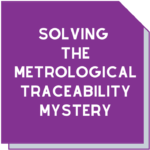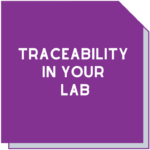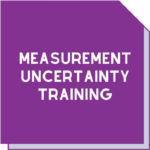The critical role traceability plays in your lab
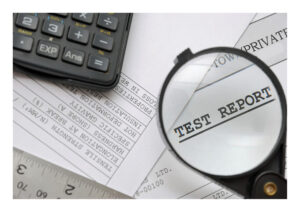 Whether you’re a NATA accredited lab in an assessment or going through a certification audit, it’s highly likely that there will be a discussion about metrological traceability.
Whether you’re a NATA accredited lab in an assessment or going through a certification audit, it’s highly likely that there will be a discussion about metrological traceability.
In fact, most labs will understand that there is a need to compare results over time or between different batches or laboratories.
Metrological traceability enables tracking back to a point of origin through to the point of release or use. It’s like the original blockchain!
In addition, your evidence provides confidence that you can compare and link your results back to national and international standards.
The definition of metrological traceability
Metrological traceability is about measurements and how they compare to other measurements. It helps us to understand what the results we produce mean in a wider context.
Samples and records or paperwork moving through the system also require traceability. However, those are subject to different requirements relating to sample and records traceability.
In metrology (the science of measurement), traceability is defined internationally as the ‘property of a measurement result whereby the result can be related to a reference through a documented unbroken chain of calibrations, each contributing to the measurement uncertainty’.
You’ll see the same definition in the ILAC Policy on Metrological Traceability of Measurement Results and in NATA’s Metrological Traceability Policy document. It’s worth reading through NATA’s document, particularly if you have an assessment coming up.
Labs use reference equipment or standards to calibrate samples or working equipment. This helps them realise metrological traceability of their results. The reference equipment and standards are usually traceable to a national standard, for instance through the National Measurement Institute (NMI) standards.
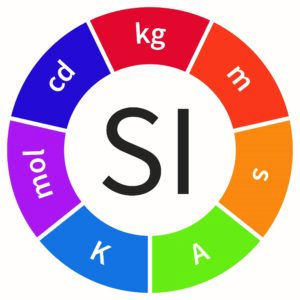 Your lab may not need traceability to SI units. In fact, depending on what you’re testing or calibrating, this may not even be possible.
Your lab may not need traceability to SI units. In fact, depending on what you’re testing or calibrating, this may not even be possible.
However, you’ll still need to demonstrate measurement traceability of your lab’s results. This helps to achieve appropriate comparability of results, depending on your client’s needs.
Since your lab is accredited and therefore must meet metrological traceability requirements, it gives your customers confidence in your lab’s results. And that makes a big difference to their outcomes, particularly when you consider what they may be using those results for. From medical decisions to bridge building, the consequences of using incorrect results could be devastating.
Do I have to consider measurement uncertainty?
Traceability direct affects the estimates of measurement uncertainty (MU) that you publish in your accreditation scope and your reports.
If you send your equipment out for calibration, the reports you receive when the equipment is returned will have estimates of MU associated with the results. This will be used in your uncertainty budgets for your results.
The shorter the chain between your lab and an NMI, the smaller the MU you’d expect to see. It’s important to ensure that the MU offered by a lab is suitable for your needs. But there are costs to having a shorter chain length between your lab and an NMI and hence a smaller MU. How do you know how long that chain should be?
By the way, if you have questions about MU in your lab, we have a training course that can help.
What does the ISO/IEC 17025 standard say?
In short, the standard says that:
- If the equipment you’re using has a significant effect on your measurement results, you must calibrate it and
- You need to have a programme and a procedure in place for equipment calibration
This means that if your lab is accredited to ISO/IEC 17025 (or if you’re looking to become accredited), you’ll need to be sure that your measurement system meets the requirements.
If you’re a calibration lab, wherever technically possible, you’ll need to establish an unbroken calibration chain, linking your measurement standards to a relevant primary standard of the SI unit.
If you’re a testing lab, you need to use a calibration service that is competent and capable of demonstrating that traceability. And you’ll also need to look at the traceability of any reference standards you’re using (they come up under the banner of ‘equipment’).
Perhaps you don’t believe that your lab equipment doesn’t affect your test. In this case, you need to have objective evidence to support your decision. And yes, during an assessment an assessor will want to see this!
How do I find someone to help?
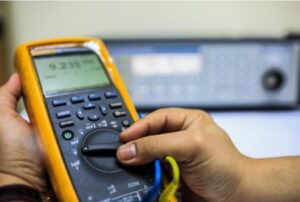 If you’re looking for metrological traceability from external services, there are a couple of options.
If you’re looking for metrological traceability from external services, there are a couple of options.
You can use the services of an NMI, through an ISO/IEC 17025 accredited lab or through a certified reference material.
In Australia, the National Measurement Institute has a range of calibration and testing facilities. The NATA website has a search function that can be used to find accredited labs in your area.
However, before you send your equipment to any lab, carefully review their scope of accreditation. Be sure they list the measurement function you’re seeking for your metrological traceability. Also check that their calibration measurement capability meets your needs and that of any methods you are using in your lab.
If possible, seek quotes from more than one lab. Confirm that they can carry out the calibration or testing you need and check their turnaround time and pricing. Be sure to request an endorsed calibration certificate, bearing the symbol of the accreditation body. This should be in line with their scope of accreditation.
An accredited lab shouldn’t charge extra for a certificate bearing the symbol of the accreditation body. However, this is also a useful question to ask.
Once your equipment is returned, check the report! It must contain the accreditation body’s emblem, the results, an estimate of MU and a description of the reference standard.
For some areas of testing, like chemistry and biology, it’s not just about the equipment. Those expensive little vials of materials must be the right ones for you to demonstrate appropriate Metrological Traceability. That’s where things can become tricky.
And remember, document every step of your process.
The final word
During our years of working with labs, we discovered that many labs were struggling with these concepts. That’s why we developed our half-day workshop, Without a Trace.
This workshop is for people who make decisions about calibrations, use of equipment and reference materials. Anyone involved in quality assurance will also find it useful.
You’ll refresh your knowledge of traceability and develop appropriate strategies for ensuring the traceability of test and calibration results. You’ll also learn how to show you have met NATA Accreditation requirements during an assessment.
The aim is for laboratory staff to intelligently evaluate the traceability of calibrations and reference materials. Where needed, they can also respond to the requirements of ISO 17025 and NATA’s Metrological Traceability Policy.
In this workshop you will:
- Learn what metrological traceability really means in a practical sense and how it relates to your lab
- Work through your methods, pull them apart and determine what you require – and what you don’t
- Discuss the interface of the customer’s needs and your lab’s traceability capabilities
- Learn how to demonstrate metrological traceability to a NATA assessment team
To ensure this workshop is of immediate and practical use, we’ll work through a method from your lab, as well as some real-world worked examples.
And we’ll check on you later!
We know that there’s usually nagging questions after any training course. That’s why we check in with you a couple of weeks afterwards to make sure you’re on track with your traceability investigations.
If you have a few people that need training, we can run this inhouse for you. Phone Maree (0411 540 709) or email info@masmanagementsystems.com.au
Remember you don’t have to do this alone!
Download the article The critical role traceability plays in your lab



